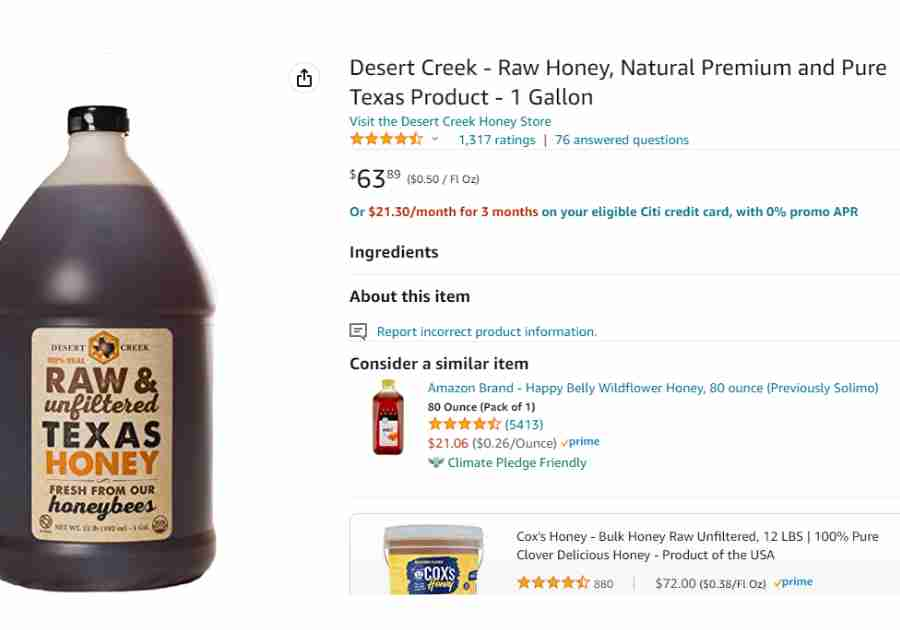Ever notice all the mead ads during the super bowl? How about when you’re out at the supermarket and you’re looking for some mead and stroll over to the mead aisle. Just the other day I was in whole foods and wondering to myself, “hey, how come there’s 100 different wines available, but no mead? Today I’m going to delve into why exactly mead is no longer popular.
Mead isn’t popular anymore because the cost, availability, and process by which we make mead isn’t as cost effective as making other alcoholic drinks is. Getting your hands on honey not only takes more effort for the producer, but it also costs way more for the guy making the brew.
While cost is the main reason that mead isn’t popular anymore, there’s also a multitude of other reasons that came downstream from that.
Cost of Honey
Honey is very hard to produce for a few reasons. It’s a byproduct of bees taking plant secretions and mixing their own enzymes with it. They store it in their honeycombs and want to keep it for themselves. By the very nature of how it’s created, it’s a more difficult sugar to work with than say malt which comes from a plant that you grow.
When you consider the difference between using malt for beer, grapes for wine, or honey for mead, you can easily see how it would be a problem to get enough honey to make mead with. Malt is easier to get because it’s just a sugary byproduct of plants you have for food. Grapes, while slightly more difficult than malt, are also just plants.
So when people started figuring out that they can use the sugar from these plants as opposed to harvesting honey from bees, people naturally gravitated towards what was easier.
Over this transition towards more efficient farming techniques over the centuries, it became just a no brainer to make beer and wine instead of mead. Because of this ease of use to make, it became more economical to make beer and wine than mead. When it’s easier to make, it’s also cheaper. This is how mead’s popularity originally waned in favor of beer and wine.
Fast forward to the current day and that popularity still exits. The economic situation regarding the different fermentables changed slightly because of modern technology, but it’s still the same categories of malt-grapes-honey from least to most expensive. Habits die hard, and barring some kind of new cheap way to manufacture honey, I don’t see mead becoming top dog again.
Availability of Honey
Another reason for lack of popularity is that honey is becoming not only less available, but also less varieties. There’s something going on due to use of pesticides or certain farming techniques that is killing off bees at an alarming rate. This is being talked about in apocalyptic terms because there’s this giant mass bee dieoff and no one seems to know what to do.
Less bees means less honey, and less honey drives up the cost of the honey we do have. Less bees also mean less bees in unique areas where certain flowers grow giving us a unique flavor of honey. Unique flavors of honey give us different honeys to experiment for new mead flavors.
The lack of bees is causing a situation where people who want to make honey are going to have to come up with new safe beekeeping techniques. That all costs money, time, and ingenuity. In the meantime, don’t expect corporate America to run wild with creating mead popularity if they can’t source the ingredients.
Mead Culture vs Wine Culture
Mead used to be a highly sought after alcoholic drink that was used in celebrations and for get-togethers in much the same way that wine was today. In today’s world, the culture of wine is centered around enjoying the art of it. It relishes enjoying the small details of wine from the smell to the vintage, to what food you pair with it. Although they would be loath to admit, wine culture shares a lot with geek culture, but a geek culture that is accepted and practiced by the “elites” of the world.
Contrast that to mead culture which consists of the show Vikings, Norse mythology, and Beowulf. It’s an obscure “ancient” drink that is drunk by the hyper-masculine barbarian at the gates who are seen as “primitive”.
Whether we want to believe it or not, in our current world a lot of culture is dictated ultimately by eventual support by corporate America. While there is a subset of the craft brewing world that is dedicated to producing mead, it will never take off if there aren’t commercial brands pumping them out to the masses with an advertising and marketing budget behind the product. Right now, the incentive doesn’t exist for this to happen. It’s much easier to envision a corporate get together at the Catalina wine mixer than the team building at the mead hall.
Length of Brewing Process
Another thing going for beer over mead is the length it takes to actually get the final product available in stores. Breweries are able to get beer made in a matter of months. Contrast this to the half a year it might take to make mead and you’re looking at a more specialized expensive product.
This ease of brewing is one of the reasons that made the craft beer movement take off so easily. It was just a simple tweak of ingredients from your basic lagers and you had a winning product. It’s like the opposite effect for mead. Not only are the ingredients more expensive, but it’s also harder to make.
Craft Brewery scene vs Mead scene
The craft beer scene was relegated at one point in time to guys making their own brews in their garage. Go back to the 70’s and your choice of beers was a handful of pale lagers that were all made the same way. It took a few decades, but the craft beer scene exploded in America due to a number of factors.
The craft beer scene would never have taken off if some of those people homebrewing beer in their garage didn’t start brewing companies. For something to catch on, it needs widespread adoption. Can this happen for mead?
In order for Mead to enjoy the same success as the craft beer movement, people currently making mead would have to start their own meaderies and have it get to the point where there’s major distribution. Along with that, marketing to educate the consumer base on the merits of mead. While I’m sure there’s people making meaderies, the question is, are any of them successful enough to entice corporate sponsorship?
Anything could happen in the viral age of the internet, but unless mead becomes more economical and efficient, mead won’t become popular.
Bottom line
The reason for mead no longer being popular comes down to simple economics. It’s just more expensive to produce compared to beer or wine. As with many things in life, things that are easier are more likely to happen. Perhaps some day we’ll see a mead renaissance. Are you the one to make it happen?



